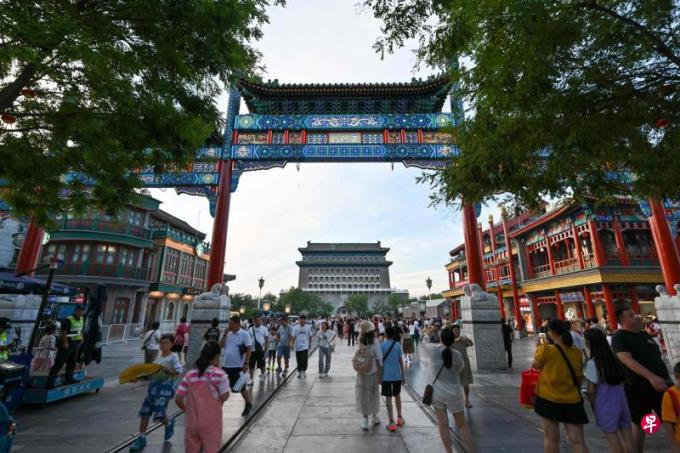
For many central and western provinces, the population growth of the provincial capital cities is at the cost of decreased population in other cities around the surrounding cities.This is not conducive to the "sinking" development of small and medium -sized cities and counties, and new development unevenness will occur.
Since China started the process of reform and opening up in 1978, the population has gradually gathered to major coastal cities, thus forming four first -tier cities in Beijing, Shanghai, Guangzhou, and Shenzhen, as well as second -tier city groups with the provincial capitals of coastal provinces.These coastal first and second -tier cities have long become key cities to absorb foreign populations.In recent years, as the population capacity of large coastal cities has become saturated, the population no longer flows to these first -tier and second -tier cities, and has begun to accelerate the flow to some provincial capital cities in the central and western regions.This is changing the general trend that the population of population formed in the past 40 years to the east coastal areas has provided population support for the balanced development of the majority of central and western regions.
First -tier cities are no longer the first choice for the migrant population
For a long time, Beishangguangshen has been the first choice for China's domestic population.These first -tier cities have become the big households who have absorbed foreign populations due to economic development, high opening up, improved infrastructure, and many opportunities for employment.Taking the capital Beijing as an example, the population scale in 1990 was about 10.8 million, and in 2000, it increased to 13.8 million, and the increase of 3 million in 10 years.By 2010, the population increased to approximately 19.6 million, and another 5.8 million people in 10 years.In 2020, Beijing's permanent population reached 21.9 million, an increase of 2.3 million in 10 years.
After 2020, Beijing's population growth has a significant slowing trend.In the whole year of 2023, the population of the first place in Beijing was only increased by 15,000, which was rarely increased by an average of about 400,000 people per year between 2000 and 2020.The high housing prices in Beijing and the policy of controlling the foreign population issued by the local government are the main reasons for the slowdown in population growth in Beijing.At the same time, the population growth of other first -tier cities has also slowed down.Shanghai, with more than 24 million people, only increased 116,000 people last last last; Guangzhou with a population of 18.8 million increased only 90,000.
In comparison, Hefei, the provincial capital of Anhui Province, has a population of more than 9.8 million. Last year, the population growth reached an amazing 220,000, surpassing the population increase in any eastern coastal city.Guiyang City, Guizhou, Guizhou, has also increased by 180,000. It not only exceeds the north, Shanghai, Guangzhou and Shenzhen, but also higher than second -tier cities such as Hangzhou, Nanjing, and Xiamen.Cities with a large number of people in other population also include Zhengzhou, Chengdu, Xi'an, and Changsha in the central region.
The rise of cities in the central and western regions
With the changes in the global and China's economic pattern and the adjustment of the regional economic development strategy, the population flow of China's population is undergoing a deep direction change.Group) Gathering.
China ’s export -oriented strategy has been supporting the high -speed growth of the eastern coastal areas for a long time, and a large number of people have gathered in these provinces and cities.In recent years, the economic and trade links between China and traditional trade partners such as the United States, Europe, and Japan have been disturbed by factors such as geopolitics and trade frictions. The Chinese government has proposed new development of domestic and international dual -cycle, sinking development, and new productivity.Concepts, avoid excessive economic focus to tilt towards large cities in the east, emphasize the balanced development between regions.
From the perspective of regional development strategies, the Chinese government has seen the imbalance of the east and west development brought by reform and opening up, and proposes plans for the development of western regions, the rise of the central region, and revitalizing the Northeast.It is not significant. The population continues to flow along the coast. The population size of first -tier cities such as Beijing and Shanghai has lost control, causing many social governance problems.
In recent years, changes in the epidemic and international situation have caused a great blow to coastal export processing companies, and foreign capital has also reduced.The dual -cycle, the domestic unified market and the new productive productivity strategy have greatly developed the independent R & D and production bases of the hinterland of the central and western regions.The Chinese government has also encouraged talents to "sink" from the first and second -tier cities of the coast to large, middle and small cities in the Mainland, and support the providing talents, funds and technologies to mainland cities to the mainland cities to help the development of cities in the Mainland.
This year, the number of graduates of Chinese universities reached 11.79 million, a record high, and the employment problems of these young people have become the focus of social attention.More and more university graduates are encouraged to go to the central and western regions to find new job opportunities, rather than choose to stay in the first -tier and second -tier cities along the coast like their father.
At the same time, about 40%of the working population groups have become increasingly looking for work and settlement nearby.With the closure of the eastern export processing plant and the increase in the mainland work opportunities, the inter -provincial flow (especially from the central and western regions to the east) of migrant workers is decreasing.The aging of the population allows young migrant workers to employment nearby to facilitate care for the elderly.These factors are deeply changing the traditional flow direction of migrant workers from west to east.
However, not all cities in the central and western regions are increasing. In fact, many cities in the central and western regions are still declining.Take Chengdu and Chongqing, near the west, as an example. In 2023, Chengdu's population increased by 135,000, while Chongqing decreased by about 220,000.The population of Zhengzhou, Henan Province, province in the central province has increased by 180,000, but the population of Zhoukou, Xinyang and Nanyang City, which is also located in Henan, has decreased by more than 100,000.It can be seen that even between cities in the central and western regions, they are facing fierce competition for the population.For many central and western provinces, the population growth of the provincial capital cities is at the cost of decreased population in other cities around the surrounding cities.This is not conducive to the "sinking" development of small and medium -sized cities and counties, and new development unevenness will occur.
The changes in the direction of population flow are also closely related to China's industrial layout adjustment. Some provinces and cities with faster population growth are often places where emerging industries such as electric vehicles, digital technology, and new energy.The increase in urban population such as Hefei and Zhengzhou is closely related to the development of local new energy vehicles and high -tech industrial parks.Hainan island contains three prefecture -level cities in Haikou City, Sanya and Puzhou City. In 2023, all the population was increasing.This is very related to the construction of a free trade port with Hainan Province.
The author is the Deputy Director and Senior Researcher of the East Asia Research Institute of the National University of Singapore




